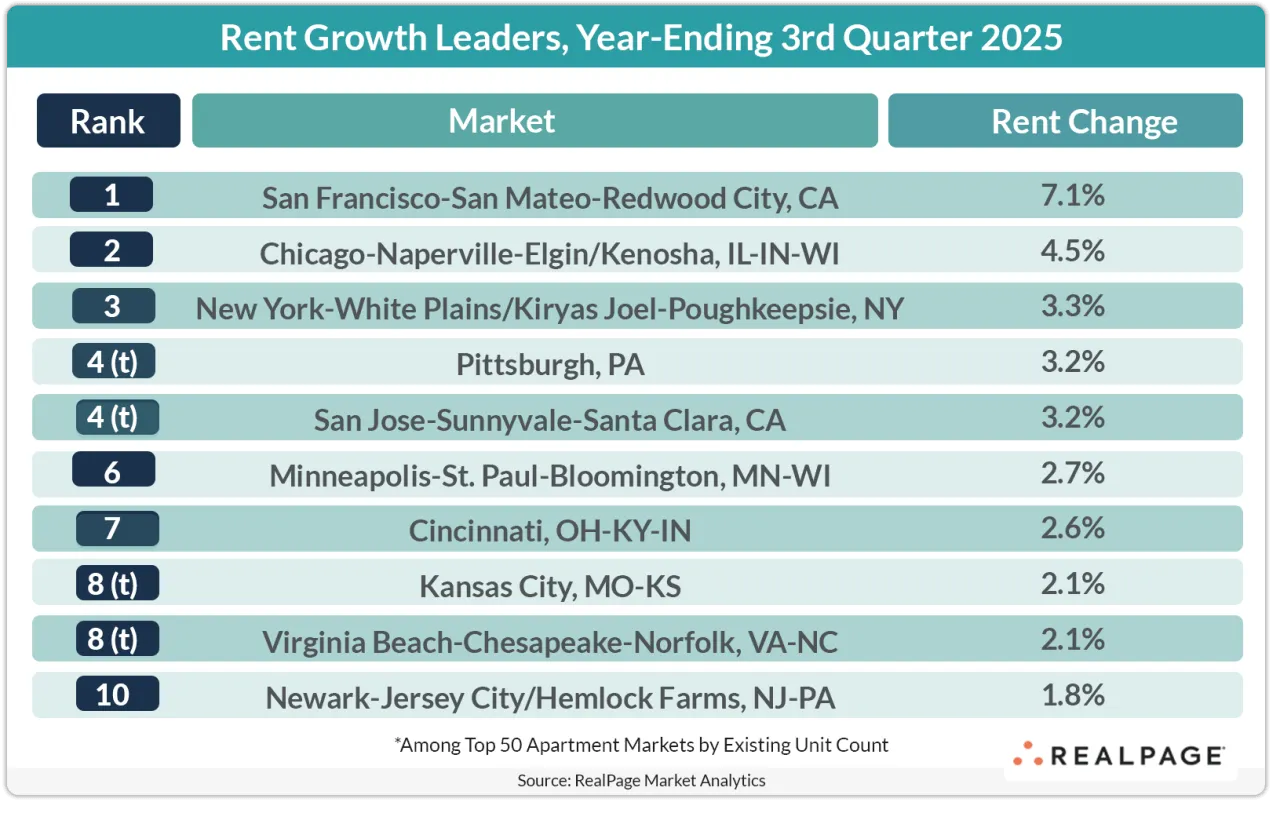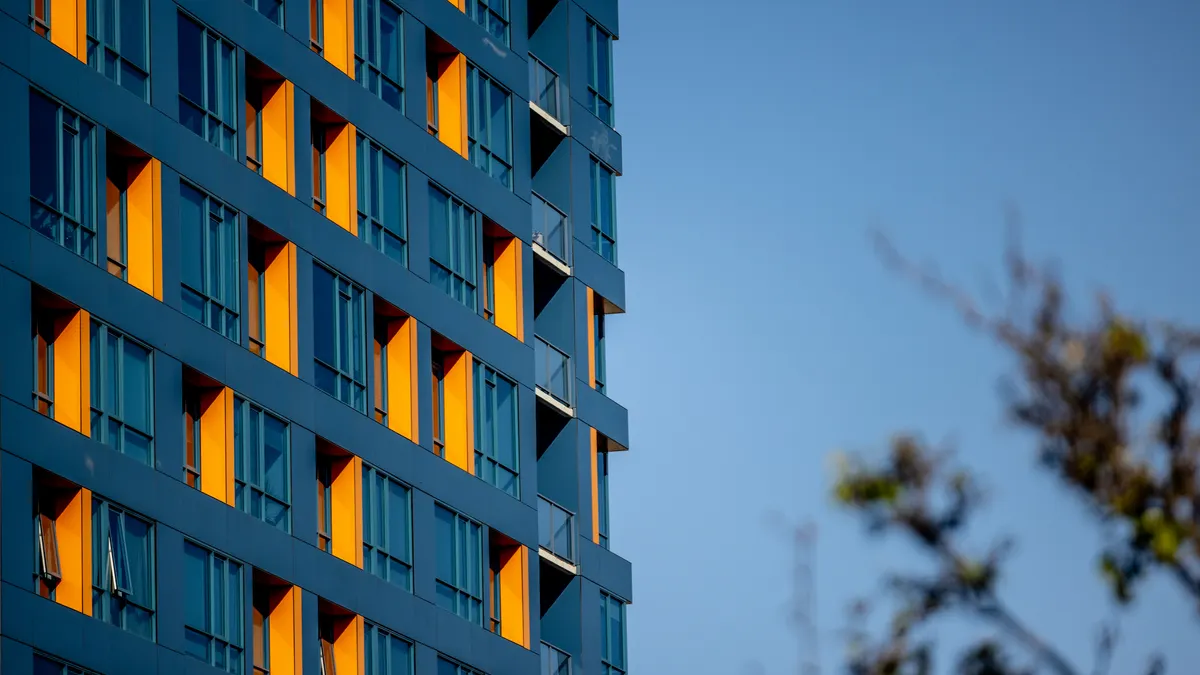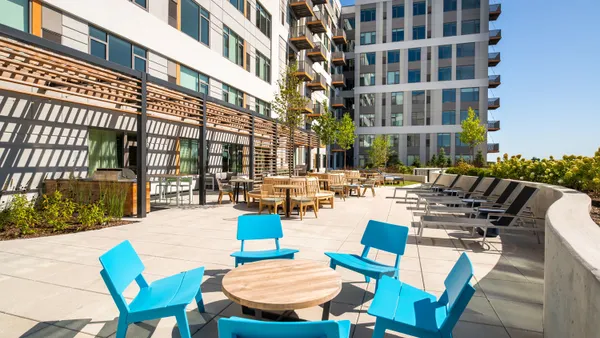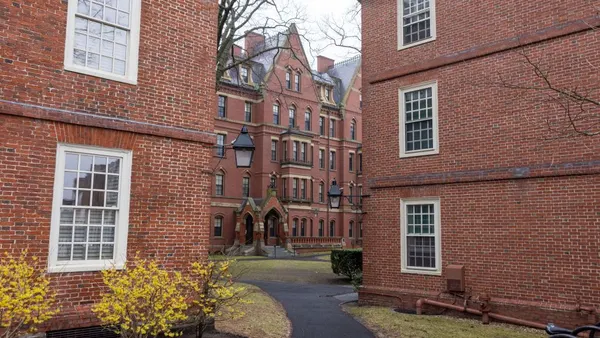In September, the average advertised rent fell $6 to $1,750 in the U.S., while year-over-year growth fell 30 basis points to 0.6%, according to an Oct. 6 report from Yardi Matrix. That was the biggest September decline since 2009, toward the end of the financial crisis, and the largest one-month drop since November 2022.
Demand slowed in the U.S. apartment market in the third quarter, with rents down a mild 0.1%, ending the streak of rapid growth seen over much of the past two years, according to a Q3 RealPage report. Rents remain close to all-time highs, but the drop could signal emerging market softness.
Roughly 637,100 market-rate units were absorbed in Q3, nearly double the average volume absorbed annually over the past decade, per RealPage. Still, this latest showing marked a turn in the trend. It was down notably from the nearly 784,900 units absorbed in Q2 — a historic peak after nine quarters of growth.
Trouble ahead?
There are increasing signs of an economic slowdown. Unemployment rose to 4.3% in August, and labor challenges are weighing on consumer sentiment, which has slipped after gains in June and July, per Yardi.
“More households now expect declining incomes, even as many already struggle to keep pace with inflation,” according to the Yardi report. “This is concerning for multifamily, given the link between consumer confidence and household formation.”
Still, supply remains the key force suppressing rent growth, per RealPage. The supply-heavy South and West regions saw rent cuts in Q3 and the past year, while the Midwest and Northeast regions – where supply additions have been milder – logged only modest price increases.
At the same time, U.S. apartment supply volumes continue to slow rapidly, according to RealPage, though the latest round of deliveries is still ahead of decade norms. More than 474,800 units wrapped up construction in the past year, marking a third consecutive quarter of decline after annual supply volumes peaked in Q4 2024.
“Sluggish new lease activity appears to be the primary driver behind a weaker-than-expected 3rd quarter,” RealPage Chief Economist Carl Whitaker said in the release. “This sluggishness looks to be a reflection of broader macroeconomic headwinds as the nation has seen job growth quickly slow in the past few months.”
Coastal and Midwest metros recorded the highest rent growth. In tech-heavy coastal markets like San Francisco, New York and San Jose, California, rent growth strength may be linked to return-to-office mandates and waning supply volumes, according to RealPage.

Rent growth remained negative in many high-supply metros, led by Denver (-4.3%); Austin, Texas (-4%); Phoenix (-3.3%), Las Vegas (-2%); and Dallas (-1.9%). Right now, many of these metros “have a glut of properties in the lease-up phase,” according to Yardi.
Occupancy backtracked quarter over quarter, falling 30 bps to 95.4% in Q3, per RealPage. While it’s common to see occupancy backtrack in the third quarter, this decline also marks a new trend after five straight quarters of occupancy increases.
How pros, renters are responding
Many owners are focused on occupancy and are trying to entice tenants to stay.
Nearly 22% of apartments were offering concessions as of Q3, and the average concession was 6.2%, per RealPage. As operators focus on filling units in the coming months, concession utilization could become even more prevalent, “making true rent growth harder to realize until discounts burn off.”
For their part, many renters are choosing to stay put.
“Resident retention also remains substantial and is in fact increasing year-over-year. We tend to see less movement during periods of macro softening, as consumers tend to be more conservative and stay in place rather than moving around,” Whitaker said.
Looking ahead to the coming decade, household growth — a key driver of multifamily demand — is expected to moderate, per Yardi. At the same time, weak household growth may impact multifamily demand less than feared because a greater share of new households are projected to rent rather than buy homes, according to an August report from Harvard’s Joint Center for Housing Studies.













